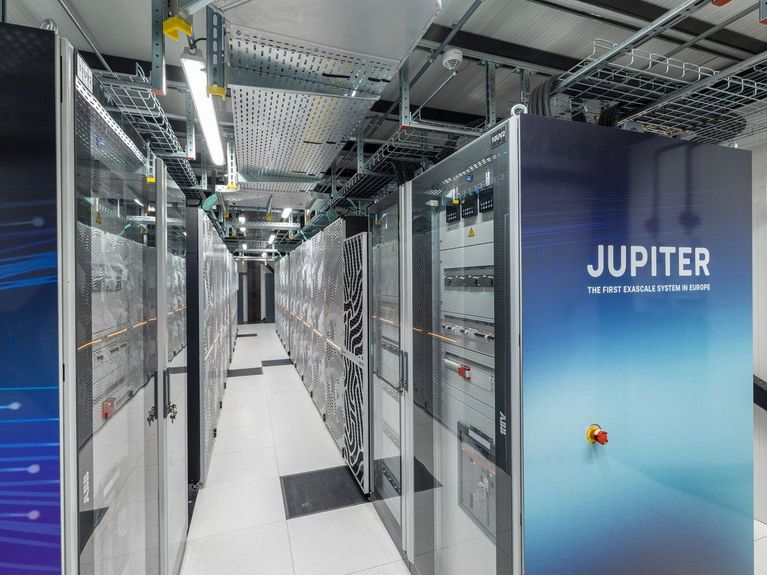
Story #20
JUPITER: Next-level Performance for Scientific Computing and AI
With JUPITER, Jülich is now home to the fastes supercomputer in Europe. With its enormous computing power, it is one of the world's most powerful AI machines and is available to a large community.
Its technical designation is a mouthful – the Joint Undertaking Pioneer for Innovative and Transformative Exascale Research (JUPITER) will be installed and operated by the Jülich Supercomputing Centre (JSC) and, as a computational multi-talent, offer support for a diverse range of applications. Here, we’re talking about the greatest challenges for the future: the energy transition and climate simulations, the behavior of individual quanta, molecular processes in nerve cells, and AI-based Large Language Models (LLMs).
JUPITER is the most powerful supercomputer in the Helmholtz Association and ranks fourth on the TOP500 list of the world's fastest supercomputers. It thus sets a new milestone in the more than 30-year tradition of excellent high-performance computing at Forschungszentrum Jülich. Their enormous computing power for classic simulations and AI applications supports our research centers in a range of joint projects, e.g. in the Helmholtz Foundation Model Initiative (HFMI), which is designed to promote the next generation of high-performance AI models to address complex research questions. Further, our cross-Center research platform for applied Artificial Intelligence, Helmholtz AI, requires the outstanding computing power that JUPITER can offer. Helmholtz AI supports the effective development and application of AI methods throughout the Helmholtz Association.
Supercomputer JUPITER: The Journey to Exascale
JUPITER can be used for a wide range of applications in science and industry. The system is available to users in Germany and Europe. The supercomputer consists of a highly scalable booster module from Eviden for particularly computationally intensive problems and will be supplemented in the future by a universally applicable cluster module from ParTec. In addition, there is a hierarchically structured storage system with fast flash memory, high-capacity hard drives, and energy-efficient tape media for long-term data backup.
The new supercomputer features not only a dynamic system architecture, but also a highly flexible component: the Modular Data Centre (MDC), which allows revolutionary computing technologies like quantum computers and neuromorphic computers to be readily integrated. In short: it can combine the best of all future IT worlds – and can only be found at Helmholtz.
Picture: Forschungszentrum Jülich